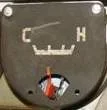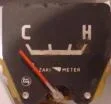BJ40 Body Electrical FSM
Hello Rudi, thank you very much for sharing all this information. I have a long time looking for a post like this[FONT="] (with details, pictures, etc)
[/FONT][FONT="]
I am looking for the complete FSM of electrical body (the one you used to explain how to fix the cluster gauges) I cant find it anywere and need info about the hazard switch, back up switch, etc… and maybe you have or know where this can be found. My TLC its a BJ40 ´75 with 24V electrical system.
[/FONT]
From the 1974 till Jan 1979 FSM.
Pdf format download:
https://docs.google.com/open?id=0BwGk8zcL34N4ZGZhOGIyZjItNzZhMy00MTlmLTk0ODAtMzcyMjU2YzhkYmEw
http://i1112.photobucket.com/albums...tech stuff/fsm cluster 1974-1978/Image-25.jpghttp://i1112.photobucket.com/albums...tech stuff/fsm cluster 1974-1978/Image-25.jpg
http://i1112.photobucket.com/albums...tech stuff/fsm cluster 1974-1978/Image-26.jpghttp://i1112.photobucket.com/albums...tech stuff/fsm cluster 1974-1978/Image-26.jpg
http://i1112.photobucket.com/albums...tech stuff/fsm cluster 1974-1978/Image-27.jpghttp://i1112.photobucket.com/albums...tech stuff/fsm cluster 1974-1978/Image-27.jpg
http://i1112.photobucket.com/albums...tech stuff/fsm cluster 1974-1978/Image-28.jpghttp://i1112.photobucket.com/albums...tech stuff/fsm cluster 1974-1978/Image-28.jpg
http://i1112.photobucket.com/albums...tech stuff/fsm cluster 1974-1978/Image-29.jpghttp://i1112.photobucket.com/albums...tech stuff/fsm cluster 1974-1978/Image-29.jpg
http://i1112.photobucket.com/albums...tech stuff/fsm cluster 1974-1978/Image-30.jpghttp://i1112.photobucket.com/albums...tech stuff/fsm cluster 1974-1978/Image-30.jpg
Rudi
Hello Rudi, thank you very much for sharing all this information. I have a long time looking for a post like this[FONT="] (with details, pictures, etc)
[/FONT][FONT="]
I am looking for the complete FSM of electrical body (the one you used to explain how to fix the cluster gauges) I cant find it anywere and need info about the hazard switch, back up switch, etc… and maybe you have or know where this can be found. My TLC its a BJ40 ´75 with 24V electrical system.
[/FONT]














 I'll take a brake, coffee time!
I'll take a brake, coffee time!